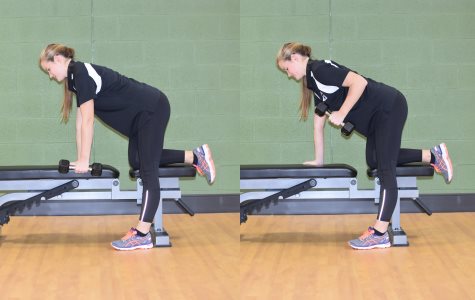Students will discover how to design exercise programs for improving a client’s aerobic and anaerobic capacity. In addition, students will be introduced to the fundamental concepts in movement screening, vocational fitness testing (e.g. police and paramedic), circuit training, and instability training.
Target population: Adults (18-65), healthy
- Course Instructor: Lyndsay Fitzgeorge
- Lab Instructors: Lyndsay Fitzgeorge
- Lab Technician: Jasmine Collins
- Semester: Three
Lab Sections:
- Section 1: Thursday 2 – 4 PM
- Section 2: Thursday 12 – 2 PM
- Section 3: Wednesday 2 – 4 PM
- Section 4: Wednesday 4 – 6 PM
Lab Schedule
| Course: PHRE 3040 - Resistance Training | Movement Pattern: Pull | horizontal | Target: Latissimus Dorsi | Synergist(s): Biceps, Rhomboids |
| Exercise |  | ||
| Regressions: | Seated Row | Progressions: | Bent-Over Row | T-Bar Row |
| Key Teaching Points | Expectation: [if 456 equals="Supervised Practice"]Supervised Practice [/if 456][if 456 not_equal="Supervised Practice"]Independent Learning[/if 456] | [579] | |
|---|---|---|---|
| Description: |
| ||
| Common Error(s): | Inappropriate momentum | Rounded lower back | Not engaging core | ||
| Spotting: | |||
